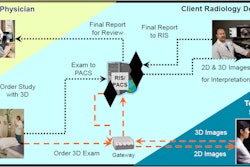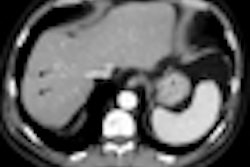SAN FRANCISCO - Advanced visualization software has developed a reputation as a time sink, but it is possible to turn a 3D lab into a profit center, according to a presentation at Stanford University's International Symposium on Multidetector-Row CT.
Offering 3D services can help increase CT and MRI referrals, which, with adequate volume, can make a 3D lab profitable, according to Laura Pierce, who manages the 3D laboratory at Stanford. She discussed the barriers that some facilities can encounter in setting up a 3D lab in a presentation at the MDCT meeting on Wednesday.
Many facilities are hesitant to set up 3D labs for a variety of reasons, which can include cost, time, complexity, usefulness, legal issues, and fear of change. The increase in referrals can help address the cost issue, especially because 3D already has current procedural terminology (CPT) codes. Users of 3D need to keep in mind that 85% of reimbursement is for the technical component and 15% is for the professional component, so technologists should be doing your rendering, Pierce said.
The time issue can be addressed through adequate training that focuses on teaching 3D technologists repetition and consistency. It can be tough to find dedicated training courses, so 3D labs should make use of as much training as they can get from their vendor, and also enlist radiologists in training at their facilities to ensure that 3D technologists are rendering studies to their specifications.
With respect to 3D's usefulness, this can be a difficult point to prove as it's hard to quantify 3D outcomes. Many radiologists feel they can diagnose without 3D, Pierce said, but facilities need to remember that the most important audience for 3D is actually referring physicians.
"The decision to implement a 3D service is based on referring physicians," she said. "Surgeons will confirm the benefits and outcomes of 3D."
Regarding legal issues, some radiologists don't want the responsibility of dealing with issues produced by technologists. Labs can counteract this by assigning an administrator -- Stanford has a dedicated employee just for this purpose -- to oversee order entry, billing, and reporting.
Pierce concluded by noting that it's easy to go with the status quo and not implement a 3D service at all. But if you do that, you'll be missing out on the clinical -- and economic -- benefits of 3D.
"Remember that effective communication and collaboration will assure you successful implementation of any new technology," Pierce said.
By Brian Casey
AuntMinnie.com staff writer
May 21, 2009
Related Reading
3D technologists: You’ve trained them -- now retain them, August 15, 2007
Navigating the economics and billing of advanced visualization, May 17, 2007
Radiologists may be better off taking hands-on approach to 3D workflow, April 30, 2007
How to find and train a 3D technologist, June 17, 2005
Copyright © 2009 AuntMinnie.com



















